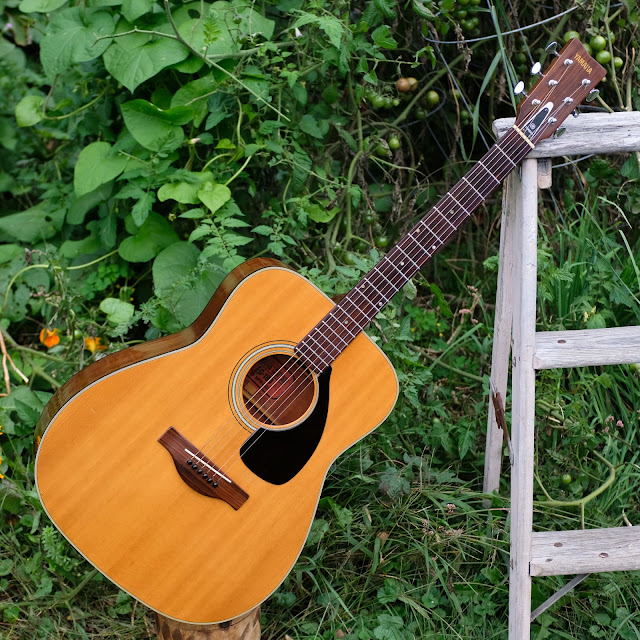1968 Yamaha FG-180 Red Label Jumbo Flattop Guitar
Yeah, there's obvious reasons people love old "red label" Japanese-made Yamahas -- durability, tone, and playability being the three you can count on. Once these are setup properly, they're just plain-great guitars and perfectly suited to backing-up your voice as they usually have plenty of low-end and good, punchy mids. Because they're ply-bodied, too, they're practical and tend to be very stable over their lifetimes.
The only main disadvantage of ply for the top in this guitar style is that the high-end notes don't have the punch and ring that you'd expect from something like a D-18 or J-50, so they're not the best choice for someone who's doing instrumental work 24/7. I've owned several Yamahas in the past of similar style, though, and have found them to be great chord-rocking workhorse guitars for singing with. They also sound very lush when fingerpicked (which is how I like them best).
This one came in via a friend of mine who's swapping-around his gear and needs a 1 3/4" or wider nut width these days. He was the original owner and the guitar is very clean and even has its original, Yamaha-branded hard case along in tow.
My only work was to give it a fret level/dress, cut string ramps in the bridge, and set it up. It has a set of 12s on it and it plays with 3/32" EA and 1/16" DGBE action at the 12th fret -- spot-on. The saddle is very low to the deck but there's no ski-jumping at the fretboard extension so I'm not worried about it structurally. Many more miles could be had out of it adjustment-wise by sanding the arc of the bridge down about 1/16" and then buffing back up.
Specs are: 25" scale, 1 11/16" nut width, 1 7/16" string spacing at the nut, 2" spacing at the bridge, 12" radius to the fretboard, mild-to-medium soft C/V neck shape, 16 1/4" lower bout, 11 5/8" upper bout, and 4 1/2" side depth.
Woods are: ply spruce top, ply mahogany back/sides, mahogany/nato(?) neck, and rosewood board and bridge. The guitar appears all-original.
It looks like there may be a few fills of finger-divots on the fretboard, but it's also possible they were filled/touched-up when it was made. I'm just noticing a few patches of brighter-red/brown discoloration here and there.
A cool, Gretsch strap button is installed at the heel.
There are a couple of scratches here on the bass side of the neck.
The original, Yamaha-branded hard case is in excellent shape.
























Comments
It features a mix of squarish, low-profile, lightweight x-bracing with a very thin (~1/16") ply top that weighs nothing and because it's very consistent sort-of vibrates like a banjo head because of that -- wide-open and with soundwaves moving through it really fast.
The light bracing on the belly-part of the guitar is why it sounds so lush and full. That same lightness is also why the high-end on these sort of sounds a little plastic or thwippy or zippy or whatever. Gibson J-45/J-50s from the '60s also tend to sound this way (but less so, because solid has better peaks in the highs when you dig-in) and it's the same reason -- the lighter the bracing, the more it favors a warm, bass-rich voice. The warmer you get the bass, the more the treble suffers. This happens on '30s and '40s fancy Martins, too -- scalloped bracing can sound great but it can also sound overly-warm as a guitar ages.
That's very generalistic and round-about, but you get the idea.
hthatcher54@yahoo.com